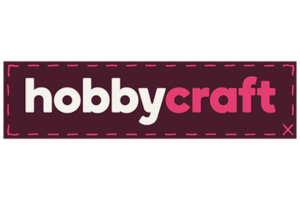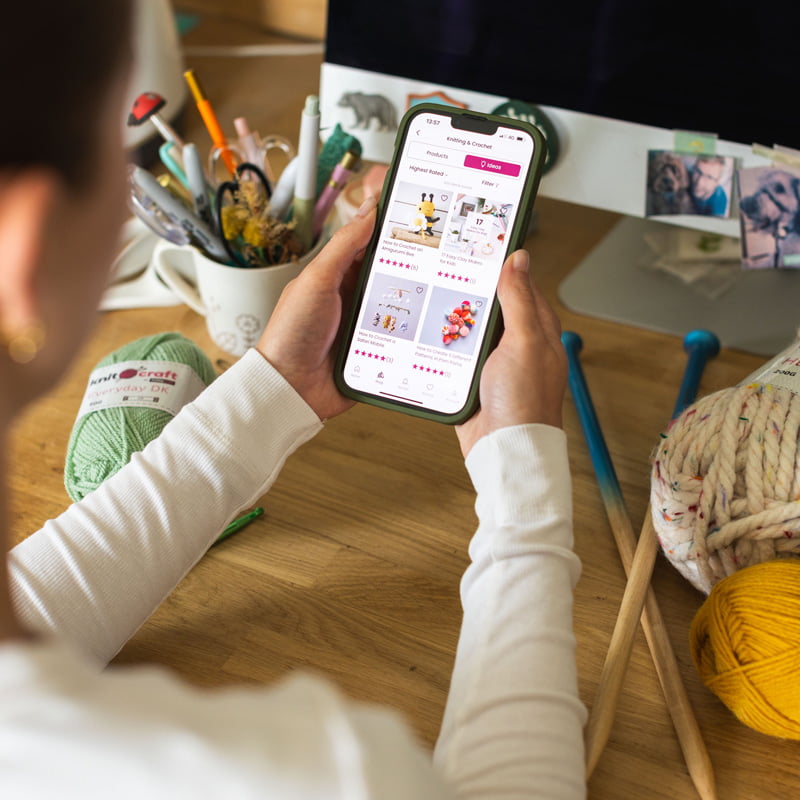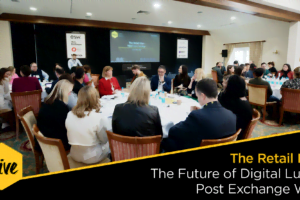Hive Heroes:
Hobbycraft’s app spiked on launch, reaching number 4 on the app store and remaining in the top 10 for weeks. Since then, they have seen a continuous download rate of over 20,000 per week, reaching 900,000 downloads within one year.
For Hobbycraft, their partnership with Poq was critical—not just for their tech stack, but for their marketing support and insights.
Matt Louth
IT Director

Helen Slaven
Chief Revenue Officer

We were lucky enough to grab 30 minutes with Matt Louth, IT Director at Hobbycraft and his partner in crime, Helen Slaven, Chief Revenue Officer at Poq during RetailJam to talk native apps, store integration, and knocking Instagram off their spot in the App Store.
It’s about constant evaluation of customer behaviour. The app is designed as a store companion, which store colleagues use daily to check stock and understand product details. This makes them advocates for the app.”
Can you share the journey and decision-making process that led to the development of your native app?
Matt: We had been considering an app for three years before deciding to move forward. About two years ago, we got more organised in our thinking, seeing the potential for rewards, discounts, and promotions. It was crucial for us to create a more significant presence in our customers’ daily lives. The app has driven footfall in stores and helped us create a valuable touchpoint with the brand for Hobbycraft customers.
What were the initial challenges and how did you overcome them?
Matt: It took time to develop a clear purpose for the app. Once we defined its role in driving omnichannel engagement and promoting the benefits of the Hobbycraft Club, we saw the value in moving forward. Selecting the right vendor was pretty seamless, taking about 2-3 months from evaluation to scope definition, and the app was delivered 9 months later.
How has the app performed since its launch?
Matt: The app spiked on launch, reaching number 4 on the app store (above Instagram for a while!) and stayed in the top 10 for weeks. We’ve seen a continuous download rate of over 20,000 per week, reaching 900,000 downloads in less than a year with a high proportion of active users. Initially, we aimed for 5% of digital revenue to come through the app, but it’s now at 17.5%.
How do you ensure the app remains engaging for users?
Helen: It’s about constant evaluation of customer behaviour. The app is designed as a store companion, which store colleagues use daily to check stock and understand product details. This makes them advocates for the app. Push notifications are also used for targeted promotions, which have proven to be more engaging than emails.
Can you describe the loyalty program integration and its impact?
Matt: The loyalty program is integrated through Eagle Eye (Promotions Management) and Bloomreach (CDP). It allows customers to join the Hobbycraft Club then earn vouchers as they spend. This can all be managed within the app, making it much clearer and more engaging for users. Push messages remind customers of rewards earned and the deadline for redemption, which helps to encourage customers to shop.
How important was the partnership with Poq in this process?
Matt: The partnership with Poq was critical—not just for their tech stack, but for their marketing support and insights. They helped us to model a realistic business case that we exceeded. Quick decision-making and Poq’s ability to mobilise rapidly were key factors in our success.
What are the future plans for the app?
Matt: We have two streams of development: upgrading the core platform with Poq and continuous optimisation based on customer feedback/insights. We are focusing on loyalty, adapting to a cookieless environment, and improving the app’s integration with our overall digital ecosystem.

The purchase channel is not the sole priority, as customers might research a purchase on the app and buy in-store. Hobbycraft remains store-centric, but their app is a vital part of their digital ecosystem.”
How do you view the competitive landscape for apps in retail?
Matt: The marketplace is crowded, but our apps are proving to offer an enhanced digital experience for our customers—which drives a continuous focus on ensuring the perception of our apps remains valuable and relevant. Convenience is key, with apps providing a persistent login, essential for maintaining engagement. The native app’s close integration with phone haptics makes it faster and more user-friendly.
How do you see the future of mobile technology impacting your app strategy?
Matt: We’re considering AI and voice commerce as future enhancements. For Gen A, the app is everything, and it’s not going anywhere. The challenge is to keep re-engaging users, ensuring our app offers valuable content and functionality that keeps customers coming back.
Any final thoughts on the role of content and community in your app strategy?
Helen: Content and community are increasingly linked to CRM, triggering more engagement. The purchase channel is not the sole priority, as customers might research a purchase on the app and buy in-store. Hobbycraft remains store-centric, but their app is a vital part of their digital ecosystem.
What are your top pieces of advice for other businesses considering a native app?
- Clarity of target deliverable. Have a clear goal and ensure alignment across key stakeholders.
- Avoid silos. Think beyond specific headcounts and integrate the app across the organisation.
- Leverage partnerships. Learn from your partners, especially in areas like App Store Optimisation.
- Embrace fear. Don’t let the fear of moving customers to a new channel hold you back.
- Find agile partners. Work with partners who can match your speed and adaptability.
- Engage store colleagues. Get buy-in from store staff as they can be your best advocates.



